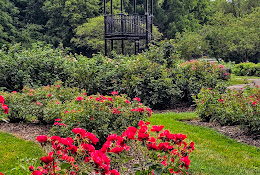
Park of Roses Shelter House
Mục lục 1 Overview & History 1 A Haven of Roses 2 Visitor Experiences 1...
Escape the everyday and immerse yourself in serenity at the Japanese Garden. A sanctuary of meticulously crafted landscapes and tranquil beauty, this garden offers a respite for the soul. If you’re looking for a Japanese Garden, this meticulously maintained space presents authentic design principles and a calming ambiance, offering a refreshing pause from the outside world.
Japanese gardens are carefully designed microcosms of nature, reflecting centuries of artistic tradition and philosophical principles. While this specific Japanese Garden’s history may be rooted in more contemporary times, its design remains faithful to the time-honored ideals of harmony, balance, and respect for nature that define classical Japanese gardens.
For inquiries or more information, please call . Visit the official website to learn more about events and current hours: .
Winding pathways invite exploration, leading visitors through a curated landscape filled with visual delights. The gentle sound of cascading water, the vibrant colors of carefully selected flora, and the textured surfaces of stone lanterns and meticulously raked gravel create a multi-sensory experience designed to promote relaxation and contemplation. It’s a family-friendly destination perfect for a peaceful afternoon.
The garden strives to be accessible to all visitors, with pathways designed to accommodate wheelchairs and strollers (verify specific accessibility features before visiting). Seating areas are strategically placed throughout the garden, providing opportunities to rest and soak in the surrounding beauty. While specific amenities may vary, the focus remains on creating a welcoming and inclusive environment for everyone.
This Japanese Garden showcases key design elements, including carefully placed stones representing mountains, water features symbolizing purification and flow, and meticulously pruned trees embodying resilience and longevity. The use of natural materials and the integration of native plants further enhance the garden’s sense of authenticity and connection to the surrounding environment. Discover the artistry of landscape design at its finest.
The garden’s landscape undergoes a captivating transformation with each passing season. Spring brings delicate blossoms of cherry trees and azaleas, summer offers lush greenery and cooling shade, autumn explodes with vibrant foliage, and winter reveals the stark beauty of bare branches and snow-dusted stones. Each season presents a unique opportunity to appreciate the garden’s ever-changing character.
While the Japanese Garden offers beauty year-round, the spring and autumn months are often considered the best times to visit, due to the colorful blooms and foliage displays. The specific timing of peak bloom and fall color will vary depending on weather conditions, so it’s advisable to check the garden’s website or social media channels for updates before planning your visit. Consider visiting during less crowded weekdays for a more serene experience.
Throughout the year, the Japanese Garden may host a variety of events and festivals celebrating Japanese culture and traditions. These events can include tea ceremonies, musical performances, art exhibitions, and seasonal celebrations. Check the garden’s calendar of events to see what’s happening during your planned visit.
To make the most of your visit, it’s recommended to allow at least two to three hours to explore the garden at a leisurely pace. Wear comfortable shoes, as you’ll be doing a fair amount of walking. Bringing a camera is highly encouraged to capture the garden’s beauty. Respect the tranquility of the space by speaking softly and avoiding disruptive behavior. Immerse yourself in the botanical garden experience.
Remember to leave no trace behind. Dispose of any trash properly, stay on designated pathways, and avoid touching or disturbing the plants and wildlife. By respecting the environment, you can help ensure that the Japanese Garden remains a beautiful and peaceful place for everyone to enjoy for years to come.

Mục lục 1 Overview & History 1 A Haven of Roses 2 Visitor Experiences 1...

Mục lục 1 Overview & History 1 A Legacy of Learning and Landscape 2 Visitor...

Mục lục 1 Overview & History 1 A Garden Dedicated to Hostas 2 Visitor Experiences...

Mục lục 1 Overview & History 1 A Local Horticultural Haven 2 Commitment to Quality...
Category with many best articles